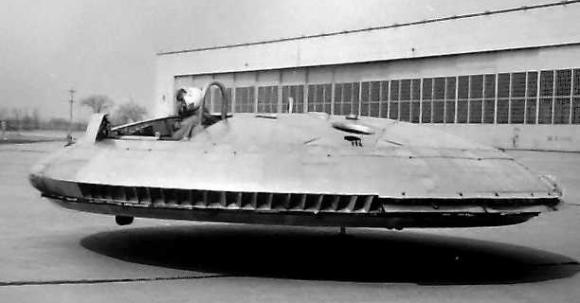The F-35 implements the latest technology, including the one designed for "spinning disks". Three researchers from Cornell University have recently published a study on the history of sustenance.
"That ten-million-dollar project, which turned out to be a failure, was later incorporated into the F-35B."
Each F-35B costs 134 million dollars, compared to the 108 million dollars and the 129 for the Air Force and Navy variants. One of the main reasons for the price difference is that the F-35B has the ability to take off and land on the decks of amphibious assault vectors of the USMC. To achieve this, the F-35B is based on a sustaining fan, a technology that comes from an experiment of the 1950 for the development of "flying saucers".
 "Between the 1954 and the 1961, the US Air Force spent 10 million - almost 100 million dollars today - to finance the 'Avrocar', a disk-shaped aircraft that was developed by the Canadian Avro. Imagined as a sort of "flying jeep", it would have had to work with NATO armed forces on the Cold War battlefields. He was driven by a giant turbo-rotor and should have taken advantage of the effect Coandă. The tests, however, turned out to be a disaster. The Avrocar was unreliable, unstable and uncontrollable. To turn to the left of 90 degrees, the Avrocar took five seconds. Even eleven for the same maneuver to the right, presumably due to the excessive motion developed by the central fan. He was also subject to constant overheating ".
"Between the 1954 and the 1961, the US Air Force spent 10 million - almost 100 million dollars today - to finance the 'Avrocar', a disk-shaped aircraft that was developed by the Canadian Avro. Imagined as a sort of "flying jeep", it would have had to work with NATO armed forces on the Cold War battlefields. He was driven by a giant turbo-rotor and should have taken advantage of the effect Coandă. The tests, however, turned out to be a disaster. The Avrocar was unreliable, unstable and uncontrollable. To turn to the left of 90 degrees, the Avrocar took five seconds. Even eleven for the same maneuver to the right, presumably due to the excessive motion developed by the central fan. He was also subject to constant overheating ".
The USAF abandoned the project in the 1961, but the concept of the sustaining fan inspired the Ryan XV-5 Vertifan system, later improved in the F-35. Currently the US Marine Corp uses the AV-8B Harrier II. The F-35B should replace the Harrier in service with the Marines within the 2025.












